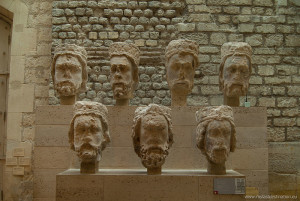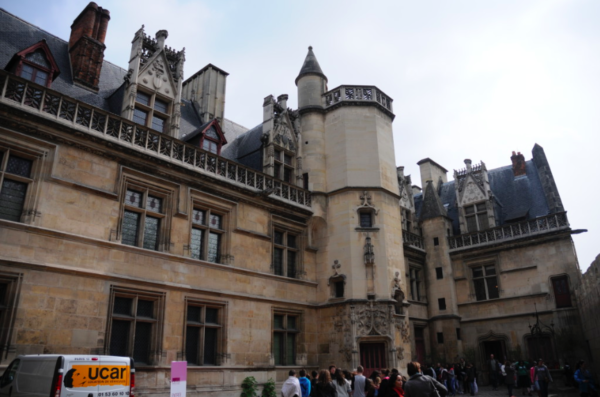We are very close to having the first two books ready to go to print. For those of you new to my blog site, these two books are walking tours of Paris based on the French Revolution. I take you to buildings, places, and sites that were significant to the events surrounding the Revolution. In Volume one (Versailles to the Faubourgs), we begin in Versailles with the convening of the Estates-General and end with two walking tours in Paris. Volume two (Marie Antoinette’s Last Ride) centers on the events from 1792 to 1794. In other words, the time frame when the Revolution got very ugly.
So I have some time on my hands. Well, not really. I’ve begun to write the third book, Where Did They Burn the Last Grandmaster of the Knights Templar?—A Walking Tour of Medieval Paris (987–1547). Just so I don’t get bored, I decided to begin the research on the fourth book, Where Did They Put the Gestapo Headquarters?—A Walking Tour of Nazi Occupied Paris (1940–1944). All along this process, I’m collecting the names of interesting people who are buried in the Paris cemeteries. Why?—because the fifth book will be a walking tour of the Paris cemeteries (Where Did They Bury Jim Morrison, the Lizard King?).

As I write the book on medieval Paris, it strikes me how many sights there are to take you to. Despite Baron Haussmann’s efforts and the urbanization of the 1970s, there are a lot of places to see evidence of medieval Paris (beyond ABC—Another Beautiful Church). One of our stops will be the Musée national du Moyen ge (the National Museum of the Middle Ages—formerly known as the Cluny Museum). The building represents one of four remaining residences left in Paris that was actually built in the Middle Ages. Built in 1334 over the 3rd century Gallo–Roman baths, the building was originally used as the residence for the abbots of Cluny. Today, it houses artifacts from the Middle Ages including the six tapestries of the Lady and the Unicorn. It also has the heads of the statues from Notre Dame that were cut off during the French Revolution.

Photo by Dan Owen
I tell people that no one can ever get the true sense of what medieval Paris was really like. Even if the city had never destroyed one building or street, a visitor cannot get a true experience. Why? Because the people who lived there are gone. It’s the people who bring a city to life, not a building. If you really want to get a good sense of what the streets and street life were like in medieval Paris, rent the silent version of the movie, The Hunchback of Notre Dame. This is the 1923 version with Lon Chaney Sr. playing the hunchback.
Do we have a lot of stories? Of course we do. I’m looking forward to sharing these with you.
Please continue to visit our blog and perhaps subscribe so that you don’t miss out on the most recent blog posts.
Thanks so much for following my blog and my little journey through this incredibly interesting process of writing a series of niche historical travel books and then getting the bloody things published.
-Stew
Please note that I do not and will not take compensation from individuals or companies I mention or promote in my blog.
Are you following us on Facebook and Twitter?
Copyright © 2014 Stew Ross

